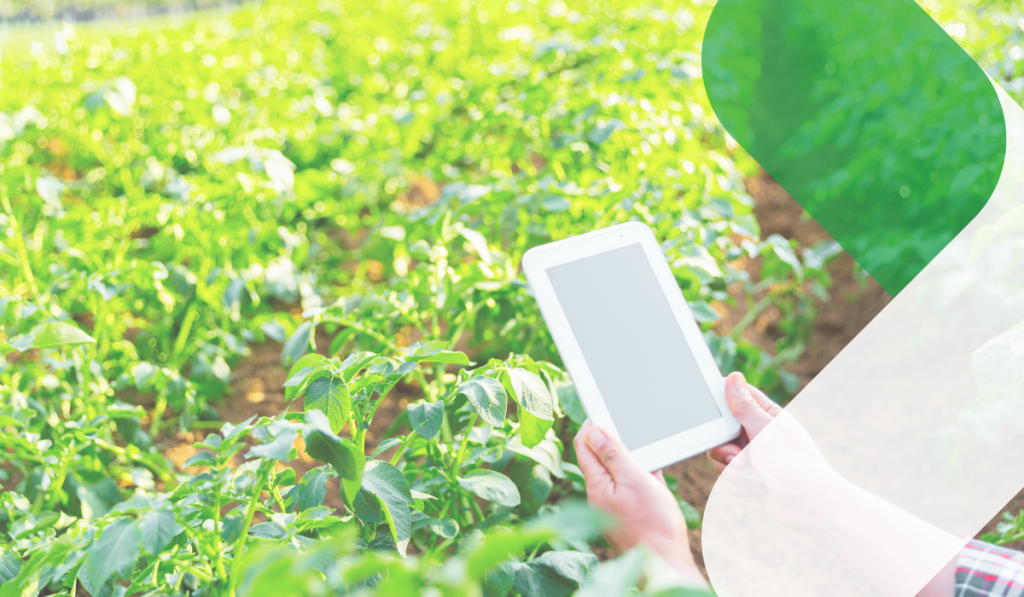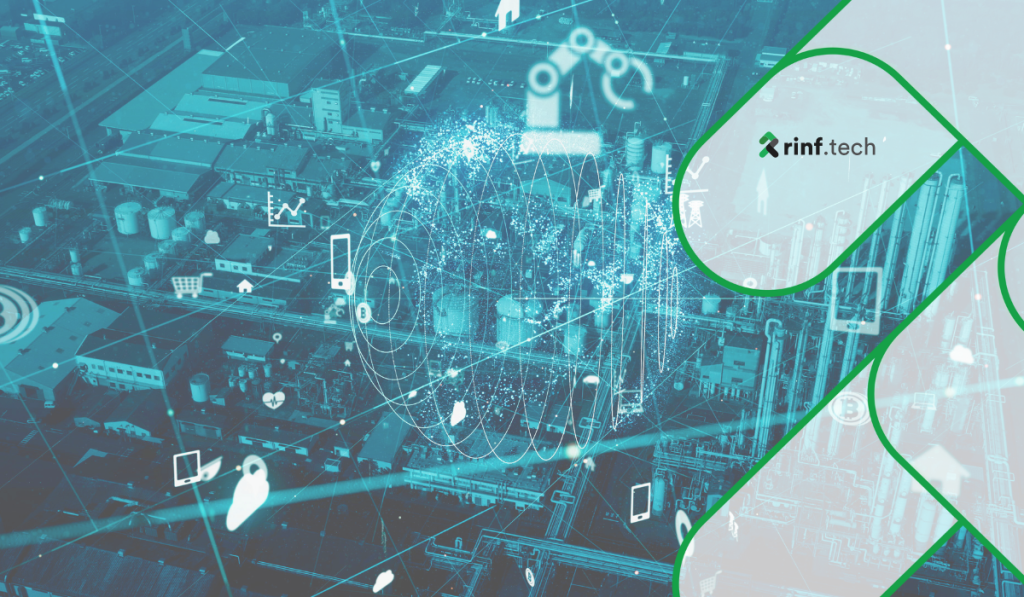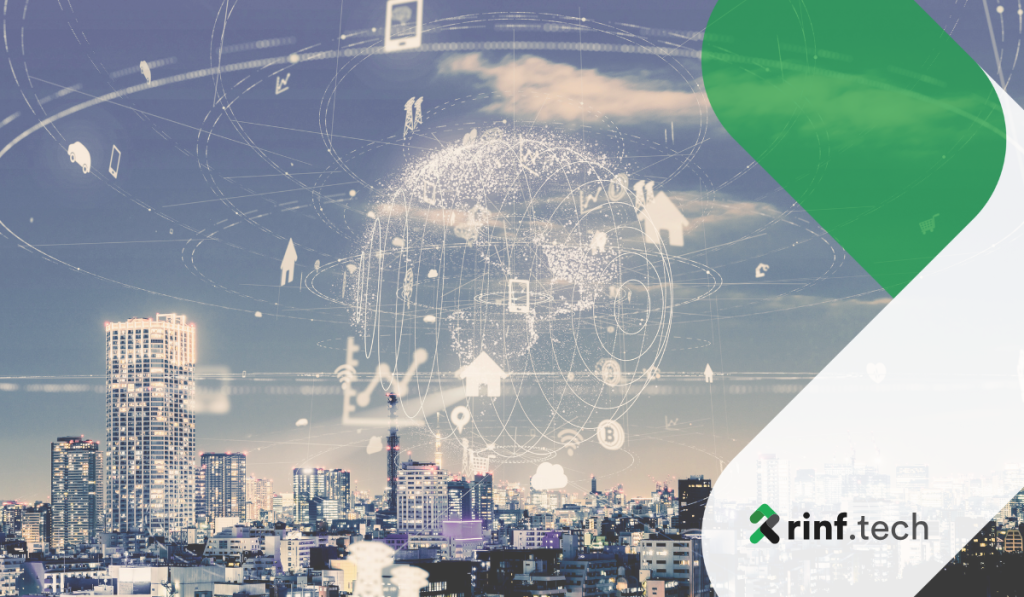
How IoT is Revolutionizing Agriculture: Key Innovations and Future Prospects
Discover how IoT is transforming traditional farming through key innovations, real-world success stories, and future trends that are shaping the agricultural sector.
IoT is a pivotal innovation in this context, offering a new paradigm for environmental monitoring through technology. The IoT’s capacity to interconnect a vast collection of sensors and devices across extensive networks enables the gathering and analyzing ecological data in real time. This capability surpasses traditional monitoring methods in scope and accuracy and opens the door to proactive environmental management and preservation strategies.
Sustainability is a guiding principle in developing and deploying IoT solutions. It ensures that the technological advancements we pursue do not cost the planet we aim to protect. By incorporating sustainability into IoT solutions, we can minimize ecological footprints, promote energy efficiency, and balance technological progress and environmental preservation.
The rise in IoT adoption across various sectors underlines its transformative potential. According to a report by the International Data Corporation (IDC), investments in the IoT ecosystem are expected to surpass $1 trillion in 2026, with environmental monitoring emerging as a key investment area. This trend indicates a growing recognition of IoT technologies’ critical role in addressing environmental challenges.
This article delves into the landscape of sustainable IoT solutions for environmental monitoring, exploring how they can revolutionize our approach to safeguarding the planet and how we can leverage the power of innovation to foster a healthier, more sustainable world for future generations.
The landscape of environmental monitoring is experiencing a profound transformation, driven by the advent and integration of IoT technologies. Traditionally, environmental data collection was a labor-intensive process characterized by irregular measurements that often needed more granularity and frequency to capture the full spectrum of the environment’s dynamics. These conventional methods, while foundational, have been significantly limited by their scale, accuracy, and timeliness, restricting our ability to respond to environmental changes and challenges effectively. However, IoT’s rise has led to a new era of environmental monitoring, marked by exceptional data collection, analysis, and application capacity.
IoT technologies leverage a network of sensors and devices that continuously gather data on a wide range of environmental parameters, including temperature, humidity, air quality, water quality, and soil conditions. These devices, capable of operating across various and remote environments, provide real-time, high-resolution data. This data offers a comprehensive view of environmental conditions and enables predictive analytics for forecasting environmental trends and potential hazards. For instance, IoT-enabled sensors can detect minute changes in air or water quality, signaling potential pollution incidents before they escalate into more significant crises.
The transformative impact of IoT on environmental monitoring is also reflected in industry trends and market growth. According to a report by MarketsandMarkets, a global environmental monitoring market is expected to grow to $17.1 billion by 2026. This growth is partly fueled by the increasing government funding and initiatives to develop and deploy advanced environmental monitoring technologies. Additionally, the private sector’s growing emphasis on sustainability and corporate social responsibility has led to increased investment in IoT solutions for environmental monitoring.
There are various benefits of IoT-based environmental monitoring.
Integrating the IoT into environmental monitoring predicts a new frontier in achieving sustainability. This technological evolution is not just about enhancing efficiency or connectivity. It’s about reshaping how we interact with and impact our environment. As we shift towards a more sustainable future, IoT stands out for its potential to deliver solutions that minimize environmental footprints while maximizing resource conservation. The essence of sustainable IoT solutions lies in their ability to intelligently monitor, control, and optimize the environmental, social, and economic aspects of technology deployment.
At the core of sustainable IoT solutions are energy-efficient sensors and devices that utilize low-power networks such as LoRaWAN, Sigfox and NB-IoT. These technologies are designed to extend battery life and reduce energy consumption, making them ideal for remote or difficult-to-reach environments. Furthermore, advances in energy harvesting technologies, which convert solar, thermal, or kinetic energy into electrical energy, provide new ways to power IoT devices sustainably.
The market for these technologies is rapidly expanding. According to a report by MarketsandMarkets, the global low-power vast area network (LPWAN) market size is expected to reach $65.0 billion by 2025. This growth indicates the increasing demand for energy-efficient IoT solutions, including environmental monitoring, across various sectors.
The sustainability of IoT solutions extends beyond the devices themselves to encompass the infrastructure that supports them. The shift towards using cloud platforms powered by renewable energy sources is a necessary development in this area. These platforms offer scalable and efficient data processing capabilities and ensure that IoT operations’ digital footprint is minimized. Advanced data compression and optimization techniques further reduce the bandwidth required for data transmission, lowering the energy consumption associated with data centers. As businesses become more conscious of their environmental impact, the demand for green data centers is increasing.
Durability is another pillar of sustainable IoT solutions. By designing robust and long-lasting devices, manufacturers can significantly reduce electronic waste and the need for frequent replacements. This approach conserves resources and aligns with the principles of the circular economy, encouraging the reuse and recycling of devices. Regulatory bodies and environmental organizations increasingly advocate for standards that promote product longevity, reflecting a broader societal shift towards sustainable consumption. Consumer demand for durable and repairable devices is rising, pushing manufacturers to prioritize sustainability in their design and production processes.
Adopting open-source platforms in IoT development illustrates the collaborative nature essential for addressing global environmental challenges. By making IoT solutions’ software and hardware designs publicly accessible, open-source platforms facilitate innovation and knowledge sharing across sectors and borders. This democratization of technology accelerates the development of sustainable solutions, enabling communities and organizations of all sizes to implement and adapt IoT systems to their specific environmental monitoring needs. The growth of the open-source movement in IoT is evidenced by the increasing number of projects and initiatives to leverage collective expertise for ecological sustainability.
The transformative impact of sustainable IoT solutions transits various sectors, each demonstrating the versatility and potential of technology to address environmental challenges. These applications showcase IoT’s usefulness in real-world settings and underline the growing trend towards integrating sustainability into technological innovation.
The application of IoT in precision agriculture displays how technology can optimize resource use and enhance environmental sustainability. By deploying sensors across farms to monitor conditions such as soil moisture, nutrient levels, and weather patterns, farmers can make data-driven decisions that significantly reduce water, fertilizer, and pesticide usage. This targeted approach not only boosts crop yields but also minimizes the environmental impact of farming practices. The global market for smart agriculture is expected to grow substantially, with predictions indicating a rise to $25.4 billion by 2028. This growth reflects the increasing adoption of IoT solutions in agriculture, driven by the need for sustainability and efficiency.
IoT technologies are at the heart of innovative city initiatives that contribute to creating more sustainable and livable urban environments. By implementing sensors and devices in various urban systems, cities can monitor and manage air quality, optimize waste collection routes, and improve building energy efficiency. For example, IoT-enabled air quality monitoring stations provide real-time data on pollution levels, enabling city authorities to implement targeted measures to enhance air quality. The push towards smart cities is gaining momentum globally, with the smart city market projected to reach $3.84 trillion by 2029. This trend highlights the role of IoT in promoting sustainable urban development.
In forest fire prevention, IoT technologies offer innovative solutions for early detection and management of fire risks. Sensors deployed in forests can monitor various environmental parameters, such as temperature, humidity, and smoke levels, providing real-time data that can be used to predict and rapidly respond to fire outbreaks. This IoT application helps protect ecosystems and biodiversity and mitigates the economic and social impacts of forest fires. The deployment of such technologies is increasingly recognized as a critical component of extensive forest management strategies.
In water resource management, sustainable IoT solutions are essential for securing the efficient use and conservation of water resources. IoT devices detect leaks in water distribution systems, helping to address the critical problem of water loss due to leaks.
We at rinf.tech worked on a project to build a solution to identify water leakage in the fields in a timely manner and prevent further damage caused by it.
Our client needed a rapid solution (built in under 4 weeks!) to pinpoint leaks using their existing tablets.
As a result, our team developed an application that leverages thermal cameras to scan the ground above water pipes. Temperature variations indicate potential leaks, which are then recorded alongside GPS coordinates. This data is seamlessly uploaded to the cloud for further analysis and reporting.
The solution offers the following benefits:
This app utilizes Microsoft’s UWP, .NET Core, and cloud solutions for a robust and secure experience. It empowers technicians to identify and address leaks quickly, saving time, money, and preventing costly damage.
IoT technologies also play a pivotal role in monitoring water quality, ensuring that water bodies are protected from pollution and that safe drinking water is available. Integrating IoT in water management also aligns with global efforts to achieve the United Nations Sustainable Development Goal 6, which focuses on ensuring the availability and sustainable management of water and sanitation for all.
While sustainable IoT solutions have immense potential to transform environmental monitoring, several challenges and considerations must be addressed to fully recognize their benefits. Understanding these challenges is crucial for stakeholders across the spectrum, from technology developers to policymakers and end-users, to navigate the complexities of IoT implementation effectively.
One of the significant barriers to adopting sustainable IoT solutions is the initial investment required for infrastructure, sensors, devices, and connectivity solutions. Deploying a comprehensive IoT system can be prohibitive for small and medium-sized enterprises (SMEs) and developing countries with limited financial resources. Moreover, the return on investment (ROI) may take time to become evident, making it a less attractive option for stakeholders with short-term financial perspectives. According to a survey by the Boston Consulting Group, 50% of companies find the high initial costs and unclear ROI among the top challenges in IoT implementation. Overcoming this barrier requires innovative financing models, grants, and incentives from governments and international organizations to lower entry barriers and demonstrate IoT solutions’ long-term economic and environmental benefits.
The vast amounts of data IoT devices collect also raise significant security and privacy concerns. As environmental monitoring systems often collect sensitive information, the risk of data breaches and unauthorized access poses a serious challenge. The complexity of IoT ecosystems, involving multiple devices and data transmission paths, increases the vulnerability to cyberattacks. Addressing these concerns requires robust security protocols, encryption, and regulatory compliance measures to protect data integrity and privacy, ensuring trust and confidence in IoT solutions.
The deployment, management, and maintenance of IoT systems for environmental monitoring require a workforce with specialized skills in IoT technologies, data analysis, and ecological science. However, there is a notable skills gap in the workforce, with a shortage of professionals trained in these interdisciplinary areas. The rapid pace of technological advancement further aggravates this issue, as existing training programs may need to meet evolving industry needs. Employers believe that 44% of workers’ skills will be disrupted in the next five years and that six in 10 staff members will require training before 2027, according to the World Economic Forum’s Future of Jobs Report 2023.
Bridging this skills gap is essential for successfully implementing sustainable IoT solutions, necessitating investment in education and training programs that equip individuals with the necessary expertise.
As we move forward, IoT technologies’ continued evolution and integration promise to enhance our environmental monitoring capabilities and redefine our relationship with our natural world. This future, while bright, is contingent upon overcoming present challenges and leveraging emerging trends in technology and sustainability.
A notable push in this transition is the development of bio-inspired sensors. Drawing inspiration from the efficiency of biological systems, these advanced sensors are designed to operate on minimal power and, remarkably, harness energy directly from their environment. Imagine sensors that are self-sufficient in energy and embedded within the earth, assessing soil moisture levels without needing battery changes. Moreover, the trend towards sensor miniaturization promises a denser network of data collection points, incorporating an elaborate network of information across vast environmental landscapes.
The widespread adoption of these advancements in sustainable IoT holds immense environmental protection and resource conservation potential. The availability of real-time, granular data significantly bolsters the capabilities of environmental scientists and policymakers. It enables them to observe and analyze trends, anticipate shifts, and craft strategies rooted in robust, actionable insights. For example, smart irrigation systems, calibrated by data from soil moisture sensors, can curtail water consumption in the agricultural sector dramatically. Similarly, real-time monitoring of air quality can inform targeted measures to reduce pollution, enhance air quality, and promote public health. Through the establishment of a sustainable and advanced IoT framework, we are set to navigate towards a future in which environmental monitoring acts as a cornerstone for fostering a more sustainable and resilient planet.
The integration of IoT technologies in environmental monitoring represents a transformative leap towards safeguarding our planet’s future.
As we navigate the complexities of climate change, pollution, and resource depletion, IoT emerges as a crucial ally, providing detailed, real-time data that enhance our understanding and management of the environment. Through innovative applications in sectors like agriculture, urban development, and resource management, IoT enables more informed decisions, promoting sustainability and efficiency.
However, realizing the full potential of these technologies requires overcoming challenges related to investment costs, data security, and workforce skills.
With continued innovation, particularly in bio-inspired and energy-efficient sensors, and a commitment to sustainable practices, IoT solutions hold the promise of fostering a healthier, more sustainable world for future generations.
The journey towards integrating IoT into environmental monitoring is not merely about technological advancement; it’s about reshaping our collective approach to environmental stewardship, ensuring a balanced coexistence with the natural world.

Discover how IoT is transforming traditional farming through key innovations, real-world success stories, and future trends that are shaping the agricultural sector.

Delving into the IoT device onboarding requirements, challenges and implementation best practices across smart home, industrial, and healthcare settings.

Delving into the complexities of AIoT, exploring its core principles, current state, challenges, and future trends.
Copyright © 2023 rinf.tech. All Rights Reserved.
Terms & Conditions. Cookie Policy. Privacy Policy.
Politica Avertizari de Integritate (RO)